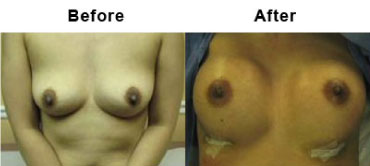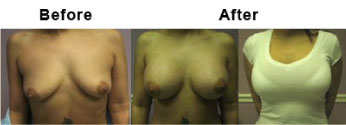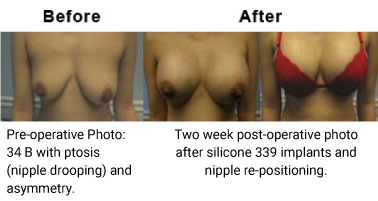-
address
7863 Broadway, Suite 135
Merrillville, IN 46410 -
CALL US TODAY
Phone number (219) 736-2047 Text (219) 400-4825
7863 Broadway, Suite 135
Merrillville, IN 46410
Allergan and Mentor are the two saline manufacturers in the USA. Both Mentor and Allergan, (used to be called Inamed and/or McGahn), make high quality implants. They are essentially the same in that regard. They are both FDA approved. Our plastic surgeons would place either one in a family member. We use both in our patients.
Silicone (gel) and saline (water) implants look identical in pictures, video and real life. Visually, there is no difference between these two implants. In case 1 shown above, there is no way to know if those implants are saline or silicone, however saline and silicone feel different.
Silicone implants have a feel that’s indistinguishable from normal breast tissue, whereas saline implants feel like water baloons. However, silicone implants are $2,000 more expensive and require a slightly bigger incision. Although saline implants feel less natural than silicone, this difference is not very obvious in most cases because the breast covers the implants anyway. Thus in the real world, the implants are covered by breast tissue anyway, which reduces the differences in feel.

Case 1: The patient shown here, wanted to be a small C cup. This means that there are going to be many dresses that will be too big for her.
This patient has 300 cc above muscle saline implants. Although both saline and silicone implants cause lift, saline implants give more lift. Preoperatively this patient is a full B cup and opted for a small C cup look (-C). In this case, the patient’s natural breast tissue is covering about 90% of the saline implant.
A larger the pre-operative breast size, allow for more coverage of the implant. A pre-operative A-cup covers 40-75% of the implant, a B-cup covers 90% of the implant, a preoperative C-cup covers 95% of the implant.
Silicone implants are especially an advantage in A-cup women, because they won’t be covered by a lot of breast tissue. Once a patient is B-cup or larger, the advantages of silicone are less and less.

Case 2: Preoperatively the patient is a B cup and had 300 cc saline implants-same as case 1 above. However, postoperatively the patient is a half a cup size larger than case #1.
Preoperatively both patients are a b cup, both patient’s used a 300 cc saline implant, but case #2 is a full C cup whereas Case #1 is a small C cup. The reason for this is that tissue elasticity varies from patient to patient.
For this reason, trying to determine the final postoperative size by wearing different sizes of breast implants before surgery-is a futile effort. This is also why preoperative CAD programs are ineffective in predicting the breast implant size to use.
The best way to attain a desirable cup size, is for patients to choose a look that they like-and having the surgeon match that look with an appropriate sized implant.

Case 3: Preoperatively, this patient is a small C cup and had 360 cc saline implants placed via an inframammary incision. The final look is a full D cup.
Compare case 3 to case 4. both patients are a D cup, but case 4 has a smaller frame than case 3.

Case 4: Like case 3 above, this patient is also a C cup preoperatively. However, this patient has a smaller chest circumference than case 3. Like case 3, she wanted to have a D cup look. a D cup look was obtained with a 339 cc saline implant. Notice how case 3 required a larger volume implant to achieve the same D cup look that in case 3. This is because case 3 has a larger frame than case. 4.